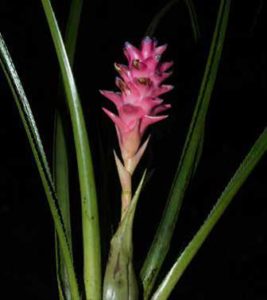Dozens of wildlife species, which are likely new to science, have been discovered in the Kaieteur National Park (KNP) and Upper Potaro area in Guyana during a month-long expedition by a team of intrepid researchers.
Some of these species found are thought to only occur in the Guiana Shield. These findings were among the most significant highlighted in a recent report released by World Wildlife Fund Guianas and Global Wildlife Conservation. The report is the second in a series which aims to highlight Guyana’s incredibly rich biodiversity and represents the most recent broad-based floral and faunal assessment in this unique region.

Sunday Times Magazine had previously published a general feature on the findings, but today we highlight the discovery of new plant species in the Potaro plateau.
Even though the Potaro plateau has been much better collected than most areas of Guyana, during a quick survey, researchers were able to find at least three new species of flowering plants (one Myrsinaceae and two Melastomataceae). Additionally, five other species had not been previously collected in Guyana and several were not known from the Park or the Potaro plateau.
Noteworthy among these new records for the Potaro plateau are two species of Bromeliaceae previously only known from the type collections (Aechmea pallida and Brochinnia cataractarum) and probably photographed only for the first time. All of the new reports for the park or the Potaro plateau were from plants collected in the upper Potaro or the upper Murimuri basin, corroborating the fact that these areas should be the target for future collecting efforts.
During the survey, 11 species of Melastomataceae found had not been collected or reported for the Park or the Potaro plateau. This represents an increase of 16.67% on the number of species in this family reported for the area.
Notably, among the collections of Melastomataceae are collections of Phainantha, a rarely collected group endemic to the Guiana shield; four species of Macrocentrum, a genus mostly restricted to the Roraima formation, one new species of Salpinga, and one new species of Boyania. The team was also able to collect three species believed to be endemic to the Potaro basin: Tococadesiliens,Graffenrieda irwinii and Clidemia charadrophylla. Other notable species of Melastomataceae restricted to the Pakaraima Mountains include Clidemia heptamera, Miconia maguirei, and Tococa aristata. Four different species of myrmecophytic Melastomataceae were collected (Clidemia heptamera, Maieta guianensis, Maieta poeppigii and Tococa aristata), and a fifth one observed (Tococa guianensis).
The research teams hope that their results will be utilised to the fullest to guide land-use planning at the national level, managers of protected areas, particularly of the Kaieteur National Park, and community members and researchers to better understand the biodiversity of this area and to plan for its management.
The survey was done in close partnership with the village of Chenapau; University of Guyana’s Departments of Biology and Agriculture, and Faculty of Earth and Environmental Sciences; and Protected Areas Commission.
The full report can be accessed from www.wwfguianas.org (Guyanas Times Sunday Magazine)



